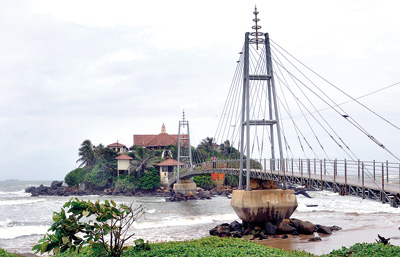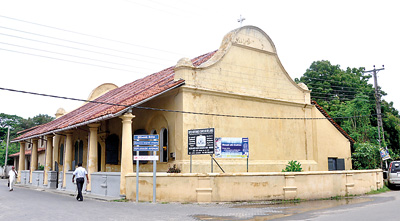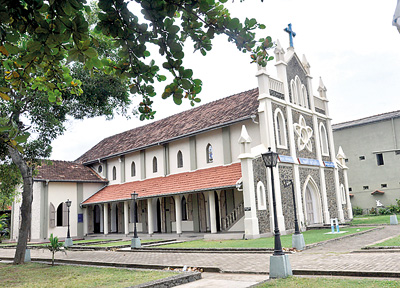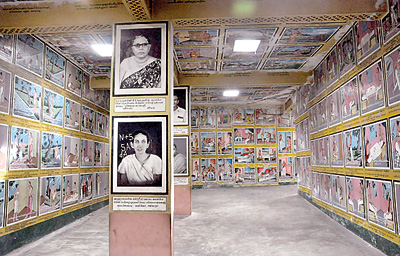Matara in the deep south
 Hi Kids, ready to tag along with the Fun Travel series once again? Today, we are on a 158 kilometre journey from Colombo, along the
Hi Kids, ready to tag along with the Fun Travel series once again? Today, we are on a 158 kilometre journey from Colombo, along the
shimmering coastline, to explore Matara in the deep south of the island. With age old structures erected by the Portuguese, Dutch and British taking you back to the Colonial era, Matara is a diversified travel spot that blends the old with the new.
Matara Fort
An iconic landmark that welcomes you, as you enter Matara Town, is the Fort built by the Dutch in 1645. Although what is left today are the rampart (made of lime stone and granite) and the gateway, inside the Fort are structures reflecting the old Colonial grandeur. Some of these have now been converted to government institutions and offices, while maintaining the architectural façade. During the Dutch period, the Fort had housed the Governor’s bungalow, cinnamon, arecanut and dynamite warehouses.
Dutch Reformed Church
One of the oldest buildings within the Fort, found today is the, Dutch Reformed Church built in the year 1706 and refurbished in 1967. Massive wooden arch doors and window panes, open verandah reflecting Dutch period town architecture, the pulpit and an old piano kept close to the altar and stone tombstones reflect the colonial touch within the premises.

Dutch Reformed Church
Star Fort
Star Fort found opposite Matara hospital is built in the shape of a unique six point star, to protect the main Fort from outside. Governor Jan Baron van Eck in 1763 had started the work of the Star Fort and the task had been completed in 1765. It is believed that a muhandiram had been assigned by the Governor to carry out the work. Between the outer-most wall and the rampart is a moat where crocodiles were kept as a protective measure.
Currently, the Star Fort houses a regional archaeology museum after it was taken over by the Archaeology Department in 1980.
Miraculous Shrine of Our Lady of Matara
This Roman Catholic Church built in 1907 is located on Beach Road. This sacred shine is well-known as therein lies the miraculous statue of Our Lady which is an early 17th century Portuguese type statue of Our Lady, cut on a solid piece of ash wood.
It has been taken by the sea three times and each time it miraculously returned to Matara. Originally, it was detected by a group of fisherman from Weligama inside a wooden crate and it was then handed over to the original church at Matara which has long since vanished. During an outbreak of a major Cholera epidemic in the area that claimed many lives, the people from the area had got together and prayed after which it was taken on a procession in Matara.
This miraculously brought the epidemic to an end. The statue was lost yet again in early 1990s when it was sent to Europe for restoration, but after surviving a dramatic ordeal the statue miraculously came back to Matara on a vessel. The third time it was lost and found was during the December 2004 Tsunami.

Shrine of Our Lady of Matara
Weherahena tunnel shrine with paintings
For those of you who enjoy ancient temple paintings and murals, the tunnel shrine in Weherahena is a must see. This tunnel shrine built in six layers behind a colossal 88 cubit high Buddha statue, is a masterpiece. A 115 year old, man-made tunnel which is 600 metres long is built excavating a mound of earth. It consists of 23000 paintings depicting the famous 550 jathaka stories.
The tunnel was built by Ven. Paravahera Revatha Thero, the founder priest of Weherahena temple, who having arrived at the thick jungle of the Weherehena area
during early 20th century, executed the innovative idea to build this massive Buddha statue and the tunnel. The natural stones found during excavations have been
preserved by putting up statues and murals on them.
Pigeon Island
Pigeon Island, with a hanging bridge for access, is a picturesque location. Located in the vicinity of the bus stand, the island
shelters a temple built about 10 years back where Buddhists monks of the Rohana chapter are ordained. Visitors accessing the island pause half way through the hanging bridge to get a glimpse of the scenic view of the sea and pose for a few photographs. A climb upto the peak of the temple in the island and one can get an all-round view of the sea.
The island is named after a particular variety of stone found in the location, although people have a wrong notion that it is because of the presence of pigeons, the Funday Times learns.

Tunnel at the Weherahena Temple
Beeralu lace weavers in Weligama
Weligama is famous for the art of traditional beeralu lace weaving. With females practicing the art as a cottage
industry, this industry attracts locals as well as tourists, who drop in, more out of curiosity as to how local women create those
intricate lace patterns, than to purchase these expensive products done out of beeralu lace.
Reptile Centre in Thelijjawila
In Thelijjawila on Akuressa Road, is an indigenous medical practitioner treating snake bites, who runs a reptile conservation centre.
A visit to the residence of this 74-year old Veda Mahaththya, D.G Wijeypala will give you an unusual experience of seeing about 15 – 20 varieties of reptiles endemic to Sri Lanka.
The Centre is often frequented by school children, university students, medical practitioners and even foreigners, Veda Mahaththaya says, adding that it was his father known as the Telijjawila Veda Mahaththya who was the first to have reptiles at home in Sri Lanka, back in the old days.
Dondra Lighthouse
The Dondra head Lighthouse in the shape of an octagonal brick tower, was built in 1890s by the British. It was designed by James Douglass and
constructed by William Douglass of the Imperial Lighthouse Service to provide guidance to the shipping route south of Sri Lanka.


